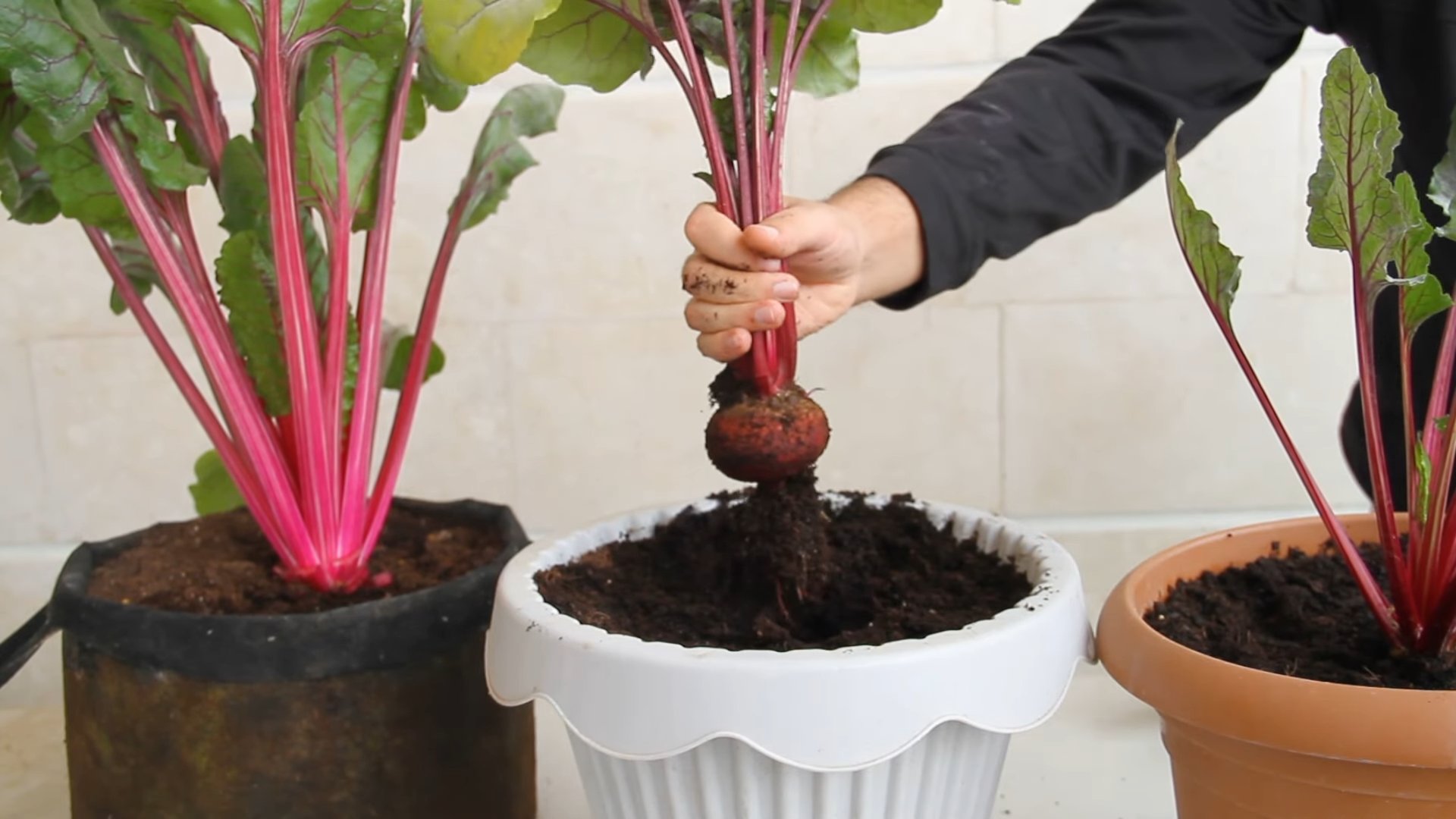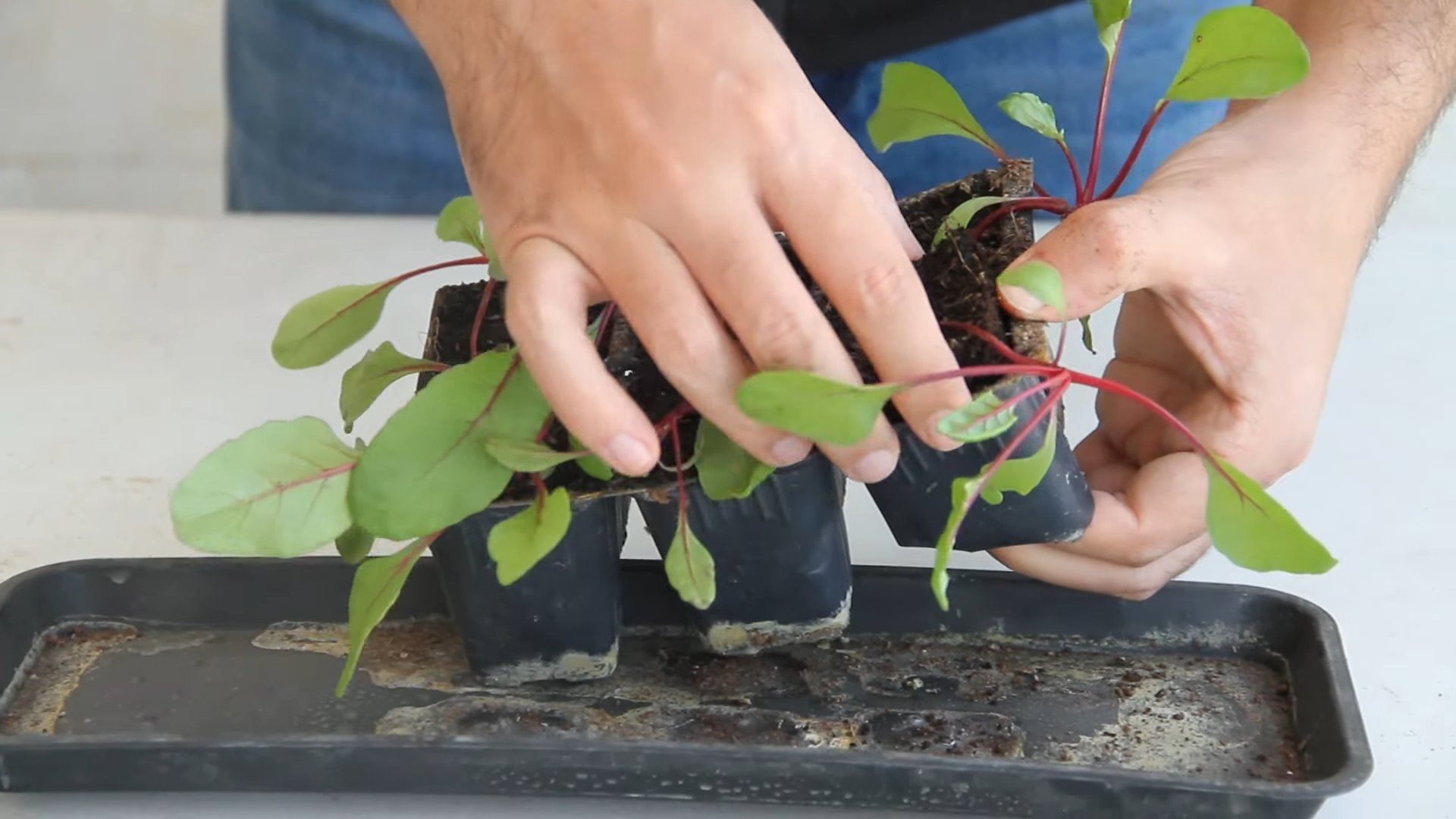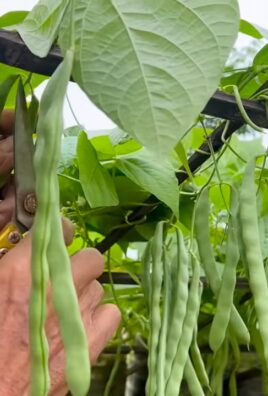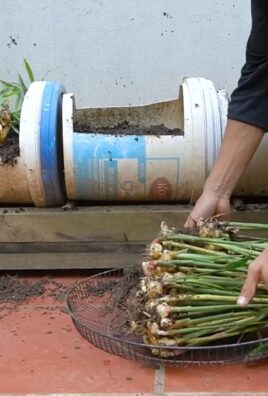Growing beets in pots might sound intimidating, but trust me, it’s easier than you think! Have you ever dreamed of harvesting your own vibrant, earthy beets right from your patio or balcony? Imagine the satisfaction of pulling those ruby-red roots from the soil, knowing you nurtured them from tiny seeds to deliciousness. This DIY guide will unlock the secrets to successful container gardening with beets, even if you’re a complete beginner.
Beets have a rich history, dating back to ancient times where their leafy greens were prized more than the roots themselves. Over centuries, selective breeding transformed the beet into the sweet, colorful vegetable we know and love today. From borscht in Eastern Europe to roasted salads worldwide, beets have earned a place on tables across cultures.
But why bother growing beets in pots? Well, not everyone has access to a sprawling garden. Container gardening allows you to enjoy fresh, homegrown produce even with limited space. Plus, it gives you more control over the soil quality and growing conditions, leading to healthier, tastier beets. This DIY article will provide you with simple, effective tricks and hacks to ensure a bountiful beet harvest, regardless of your gardening experience. I’m excited to share my tips and help you cultivate your own little beet patch!

Growing Beets in Pots: A Complete Guide for the Urban Gardener
Hey there, fellow gardening enthusiasts! I’m so excited to share my experience with growing beets in pots. It’s surprisingly easy and rewarding, even if you don’t have a sprawling backyard. Beets are packed with nutrients, delicious, and their vibrant colors add a touch of beauty to any balcony or patio. So, let’s dive into how you can successfully grow these root vegetables in containers!
Choosing the Right Beet Variety
First things first, not all beet varieties are created equal when it comes to container gardening. Some grow larger roots that require more space. Here are a few of my favorite varieties that thrive in pots:
* ‘Baby Beet’: As the name suggests, these are compact and perfect for smaller containers. They mature quickly, giving you a faster harvest.
* ‘Early Wonder’: This variety is known for its early maturity and uniform, round roots. It’s a reliable choice for beginners.
* ‘Chioggia’: If you’re looking for something visually stunning, ‘Chioggia’ beets have beautiful red and white concentric rings inside. They’re also delicious!
* ‘Golden Beet’: For a milder flavor and vibrant yellow color, try ‘Golden Beet’. They’re less earthy than red beets and add a unique touch to your dishes.
Preparing Your Pots and Soil
The right pot and soil are crucial for healthy beet growth. Here’s what I recommend:
* Pot Size: Choose pots that are at least 12 inches deep and 12 inches in diameter. This gives the beets enough room to develop their roots. Remember, beets are root vegetables!
* Drainage: Make sure your pots have drainage holes. Beets don’t like soggy soil, which can lead to root rot.
* Soil: Use a well-draining potting mix that’s rich in organic matter. I like to mix equal parts of compost, peat moss (or coconut coir), and perlite. This combination provides good drainage, aeration, and nutrients. Avoid using garden soil, as it can be too heavy and compact in containers.
Planting Your Beet Seeds
Now for the fun part – planting!
1. Fill your pots: Fill your pots with the potting mix, leaving about an inch of space at the top.
2. Sow the seeds: Beet seeds are actually clusters of seeds, so you’ll likely get multiple seedlings from each one. Sow the seeds about ½ inch deep and 2-3 inches apart.
3. Water gently: Water the soil gently after planting, making sure not to dislodge the seeds.
4. Thin the seedlings: Once the seedlings emerge (usually in 5-10 days), thin them to one plant per 2-3 inches. This gives each beet enough space to grow. Don’t just pull them out! Gently snip them off at the soil line with scissors to avoid disturbing the roots of the remaining seedlings. You can even eat the thinnings as microgreens!
Caring for Your Beet Plants
Consistent care is key to a bountiful beet harvest.
* Watering: Beets need consistent moisture, especially during hot weather. Water deeply whenever the top inch of soil feels dry to the touch. Avoid overwatering, as this can lead to root rot.
* Sunlight: Beets need at least 6 hours of sunlight per day. Place your pots in a sunny location.
* Fertilizing: Feed your beet plants every 2-3 weeks with a balanced liquid fertilizer. I like to use a fertilizer with an N-P-K ratio of 10-10-10. Follow the instructions on the fertilizer label.
* Weeding: Keep your pots free of weeds, which can compete with your beets for nutrients and water. Gently pull out any weeds that appear.
* Mulching: Add a layer of mulch around your beet plants to help retain moisture, suppress weeds, and regulate soil temperature. I like to use straw or shredded leaves.
Dealing with Pests and Diseases
Beets are generally pest-resistant, but here are a few things to watch out for:
* Leaf miners: These pests tunnel through the leaves, leaving unsightly trails. If you see leaf miners, remove the affected leaves and dispose of them. You can also use insecticidal soap to control them.
* Aphids: These tiny insects suck the sap from plants, causing them to weaken. Spray aphids with a strong stream of water or use insecticidal soap.
* Root rot: This fungal disease can occur in poorly drained soil. To prevent root rot, make sure your pots have drainage holes and avoid overwatering.
Harvesting Your Beets
The moment we’ve all been waiting for – harvest time!
* Timing: Beets are typically ready to harvest in 50-70 days, depending on the variety. You can harvest them when the roots are about 1-3 inches in diameter.
* How to harvest: Gently loosen the soil around the beets and pull them out by the greens. If the soil is dry, water it a few hours before harvesting to make it easier to pull the beets.
* Storing: Cut off the greens, leaving about an inch of stem. Store the beets in the refrigerator for up to 2 weeks. You can also store the greens separately in the refrigerator for a few days.
Using Your Beet Harvest
Now that you’ve harvested your beets, it’s time to enjoy them! Here are a few of my favorite ways to use them:
* Roasted beets: Toss beets with olive oil, salt, and pepper and roast them in the oven until tender.
* Beet salad: Combine roasted beets with goat cheese, walnuts, and a balsamic vinaigrette.
* Beet soup (borscht): This classic soup is a delicious and nutritious way to use beets.
* Beet juice: Juice beets for a healthy and refreshing drink.
* Beet greens: Don’t throw away the greens! They’re packed with nutrients and can be cooked like spinach.
Troubleshooting Common Problems
Even with the best care, you might encounter some challenges. Here are a few common problems and how to fix them:
* Poor germination: If your beet seeds aren’t germinating, make sure the soil is moist and the temperature is warm enough. You can also try soaking the seeds in water for 24 hours before planting.
* Slow growth: If your beet plants are growing slowly, make sure they’re getting enough sunlight and nutrients. Fertilize them regularly with a balanced fertilizer.
* Small roots: If your beets are small, it could be due to overcrowding. Thin the seedlings to give each beet enough space to grow.
* Bolting: Bolting is when a plant prematurely flowers and goes to seed. This can happen if the weather is too hot or if the plants are stressed. To prevent bolting, keep the soil moist and provide shade during hot weather.
Extra Tips for Success
Here are a few extra tips that I’ve learned over the years:
* Succession planting: Plant a new batch of beet seeds every 2-3 weeks to ensure a continuous harvest.
* Companion planting: Plant beets with other vegetables that benefit them, such as onions, garlic, and lettuce.
* Experiment with different varieties: Try growing different beet varieties to find your favorites.
* Enjoy the process: Gardening should be fun! Don’t be afraid to experiment and learn from your mistakes.
Growing Beets for the Greens
While we’re focused on the roots, don’t forget about the greens! Beet greens are incredibly nutritious and delicious. You can harvest them throughout the growing season without harming the root development. Just snip off a few of the outer leaves as needed. They’re great sautéed, steamed, or added to salads. Think of it as a bonus crop!
Choosing the Right Location
I know I mentioned sunlight earlier, but it’s worth emphasizing. The location of your pots is crucial. A south-facing balcony or patio is ideal, as it will provide the most sunlight. If you don’t have a south-facing spot, east or west-facing will also work, but your beets might not grow as large. Just keep an eye on them and adjust their position if needed.
Watering Techniques for Container Beets
Watering is an art, not a science! Overwatering is a common mistake, especially with container gardening. The soil in pots tends to dry out faster than in the ground, but it’s still important to avoid soggy conditions. I like to use the “finger test” – stick your finger about an inch into the soil. If it feels dry, it’s time to water. If it feels moist, wait a day or two. When you do water, water deeply until water drains out of the bottom of the pot. This ensures that the roots are getting enough moisture.
Fertilizing for Optimal Growth

Conclusion
So, there you have it! Growing beets in pots is not only achievable, it’s downright rewarding. We’ve walked you through the simple steps, from selecting the right pot and soil to nurturing your beet babies until they’re ready for harvest. But why should you bother with this DIY project when you can just buy beets at the store? The answer is simple: freshness, flavor, and the sheer satisfaction of growing your own food. Store-bought beets simply can’t compare to the vibrant, earthy sweetness of a beet you’ve nurtured from seed.
This method of growing beets in pots is a must-try for anyone with limited garden space, apartment dwellers, or even seasoned gardeners looking for a convenient and controlled way to cultivate these root vegetables. Imagine stepping out onto your balcony or patio and harvesting fresh, organic beets for your salad, roasted vegetable medley, or even a delicious beet juice. The possibilities are endless!
But don’t stop there! Feel free to experiment with different beet varieties. Golden beets offer a milder flavor and beautiful color, while Chioggia beets boast stunning concentric rings. You can also try companion planting in your pots. Marigolds can help deter pests, while herbs like basil or mint can enhance the flavor of your beets.
Consider succession planting to extend your harvest. Sow new seeds every few weeks to ensure a continuous supply of fresh beets throughout the growing season. You can also adjust the size of your pot depending on the variety of beet you’re growing. Smaller, round varieties like ‘Baby Ball’ can thrive in smaller containers, while larger varieties may require a bit more space.
Don’t be afraid to get your hands dirty and embrace the learning process. Gardening is all about experimentation and discovery. You might encounter challenges along the way, but the rewards of growing your own food are well worth the effort.
We’re confident that you’ll find growing beets in pots to be a fun, easy, and incredibly satisfying experience. So, grab your pots, soil, and seeds, and get started today! We can’t wait to hear about your success. Share your photos, tips, and experiences with us in the comments below. Let’s build a community of beet-loving gardeners and inspire others to embrace the joy of growing their own food, even in the smallest of spaces. Happy gardening!
Frequently Asked Questions (FAQs)
What size pot is best for growing beets?
The ideal pot size for growing beets depends on the variety you choose. Generally, a pot that is at least 8 inches deep and 6 inches in diameter is sufficient for smaller, round varieties like ‘Baby Ball’. For larger, more elongated varieties, opt for a pot that is at least 12 inches deep and 8 inches in diameter. Remember, beets need room to develop their roots, so err on the side of larger rather than smaller. If you’re planting multiple beets in one pot, ensure there’s at least 3-4 inches of space between each plant. Using a larger container, like a half-barrel planter, allows you to grow a significant number of beets and even incorporate companion plants.
What type of soil should I use for growing beets in pots?
Beets thrive in well-draining, fertile soil that is rich in organic matter. A good potting mix specifically formulated for vegetables is an excellent choice. Avoid using garden soil, as it can be too heavy and compact, hindering root development. You can also amend your potting mix with compost or well-rotted manure to boost its nutrient content. Beets prefer a slightly acidic to neutral soil pH (around 6.0 to 7.0). You can test your soil pH using a home testing kit and adjust it accordingly if necessary.
How often should I water my potted beets?
Water your potted beets regularly, especially during hot and dry weather. The soil should be kept consistently moist but not waterlogged. Check the soil moisture by sticking your finger about an inch deep into the soil. If it feels dry, it’s time to water. Water deeply, allowing the water to drain out of the bottom of the pot. Avoid overhead watering, as this can promote fungal diseases. Consider using a self-watering pot or adding a layer of mulch to help retain moisture.
How much sunlight do beets need?
Beets need at least 6 hours of sunlight per day to thrive. Choose a sunny location for your potted beets, such as a south-facing balcony or patio. If you live in a particularly hot climate, provide some afternoon shade to prevent the beets from overheating. If you don’t have access to enough natural sunlight, you can supplement with grow lights.
When should I harvest my beets?
Beets are typically ready to harvest 50-70 days after planting, depending on the variety. You can harvest them when the roots are about 1-3 inches in diameter. Gently loosen the soil around the beets and pull them out of the pot. You can also harvest the beet greens, which are delicious and nutritious. Simply snip off a few of the outer leaves, leaving the inner leaves to continue growing.
What are some common problems when growing beets in pots?
Some common problems when growing beets in pots include pests, diseases, and nutrient deficiencies. Pests like aphids and flea beetles can damage the leaves, while diseases like leaf spot can cause unsightly blemishes. Nutrient deficiencies can result in stunted growth or yellowing leaves. Regularly inspect your plants for signs of pests or diseases and take appropriate action. You can use organic pest control methods like insecticidal soap or neem oil. To prevent nutrient deficiencies, fertilize your beets regularly with a balanced fertilizer.
Can I grow beets in pots indoors?
Yes, you can grow beets in pots indoors, but you’ll need to provide them with adequate light. Place your potted beets near a sunny window or use grow lights to supplement natural light. You’ll also need to ensure that the temperature is consistent and that the humidity is not too high. Indoor growing can be a great option for those who live in colder climates or who want to extend their growing season.
What are some good companion plants for beets in pots?
Several plants make excellent companions for beets in pots. Marigolds can help deter pests, while herbs like basil, mint, and rosemary can enhance the flavor of your beets. Garlic and onions can also help to repel pests. Avoid planting beets near members of the brassica family, such as cabbage and broccoli, as they can compete for nutrients.
How do I store harvested beets?
After harvesting your beets, remove the greens, leaving about an inch of stem attached. Gently brush off any excess soil. Store the beets in a cool, dark, and humid place, such as the refrigerator. You can wrap them in a damp cloth or store them in a plastic bag with a few holes for ventilation. Beets can typically be stored for several weeks. The beet greens should be stored separately in the refrigerator and used within a few days.




Leave a Comment